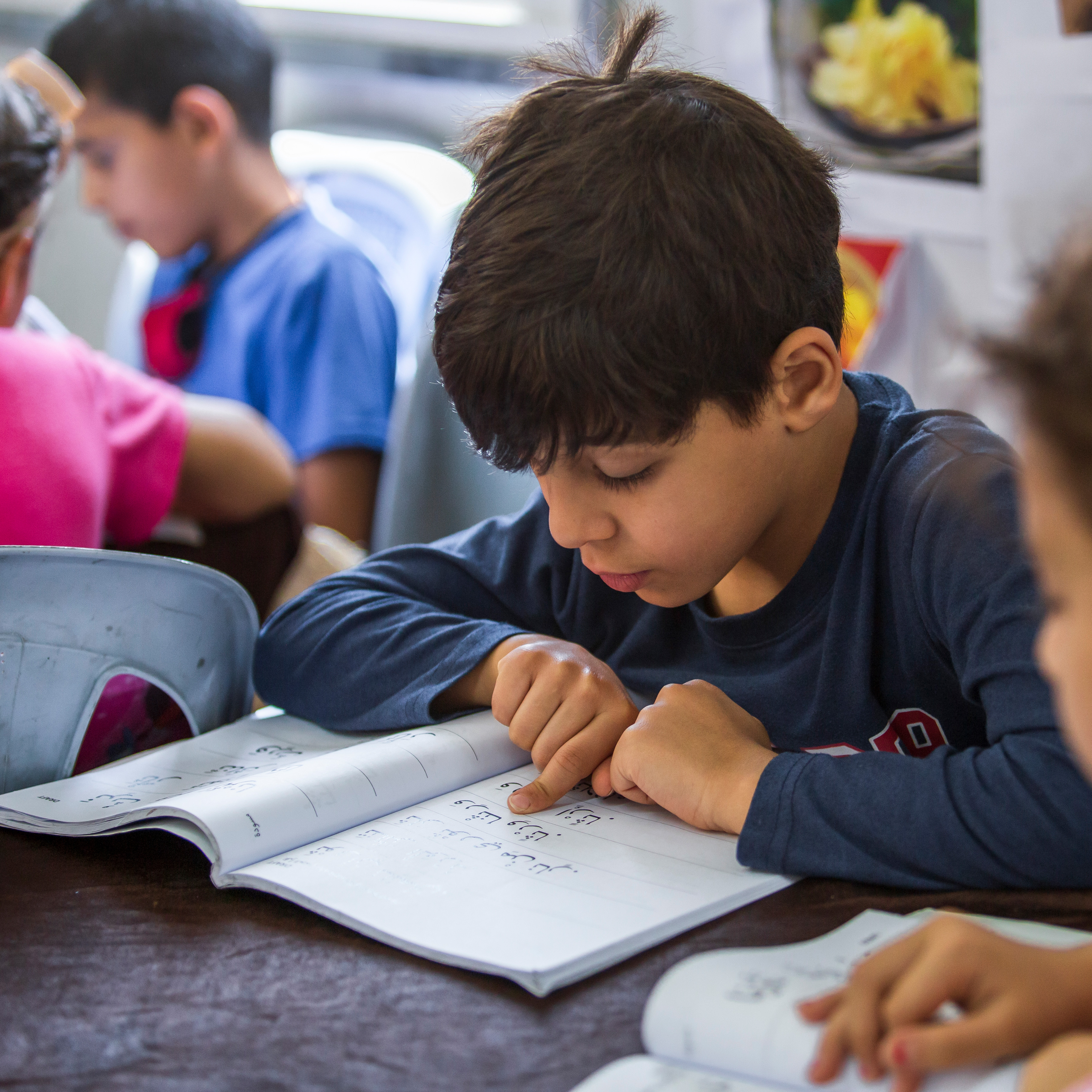Introduction
This brief highlights some of the main findings from Jordan’s 2018 National Teacher Survey around Jordan’s schools, based on principal reports. Findings are presented either on a national level, or disaggregated by school type and principal gender. The main findings of the analysis are outlined below.
Human Resources
- Grade 1-6 principal reports revealed that UNRWA schools seemed to be the most well-staffed, whereas private schools were the most resourced among grade 7-10 schools.
- Principal reports revealed that grade 7-10 private schools had the highest average number of total staff (55), while UNRWA had the lowest (31).
- MoE and private grade 1-6 schools had a lower average of reported number of teachers (20 and 23, respectively) compared to grade 7-10 schools (25 and 30, respectively). This is expected as grades 1-3 typically have classroom teachers, while grades 4 and above require a teacher for each subject.
- Despite UNRWA schools having a higher percentage of teachers when compared to their MoE and private school counterparts, the average student to teacher ratios in UNRWA schools (28:1 for grade 7-10) were much higher than in grade 7-10 MoE (17:1) and private schools (15:1).
- More than half of principals nationally, across both grade levels, reported that a shortage of qualified teachers hindered quality instruction “to some extent” or “a lot”.
Physical Resources
- MoE schools seemed to be the least well off in terms of physical resources compared to UNRWA and private schools.
- UNRWA school principals were the least likely to report shortage of library materials as an issue that hinders quality provision compared to their counterparts; 83% of UNRWA grade 1-6 school principals reported the lack of library materials affected their schools’ provision “not at all” or “very little”, compared to 34% and 69% of MoE and private school principals, respectively.
- Internet access was nearly ubiquitous across all school types. This was especially true for UNRWA schools; all UNRWA principals reported having internet access across both school levels.
- Meanwhile, wi-fi provision was less common across all school types. However, private school principals were much more likely to report having wi-fi (more than 80%), compared to principals at MoE schools (25%) and UNRWA schools (fewer than 20%).
- Principal reports revealed quality instruction was more likely to be hindered by issues related to technology in grade 1-6 schools compared to grade 7-10 schools.
Makeup of the Student Body
- Private schools were the most likely to have students whose first language differs from language of instruction, when compared to MoE and UNRWA schools.
- Principal reports revealed that MoE and UNRWA schools were more likely to have students from socio-economically disadvantaged homes compared to private schools.
- Principal reports showed that UNRWA schools had the highest proportion of students with special needs, while private schools had the lowest.
